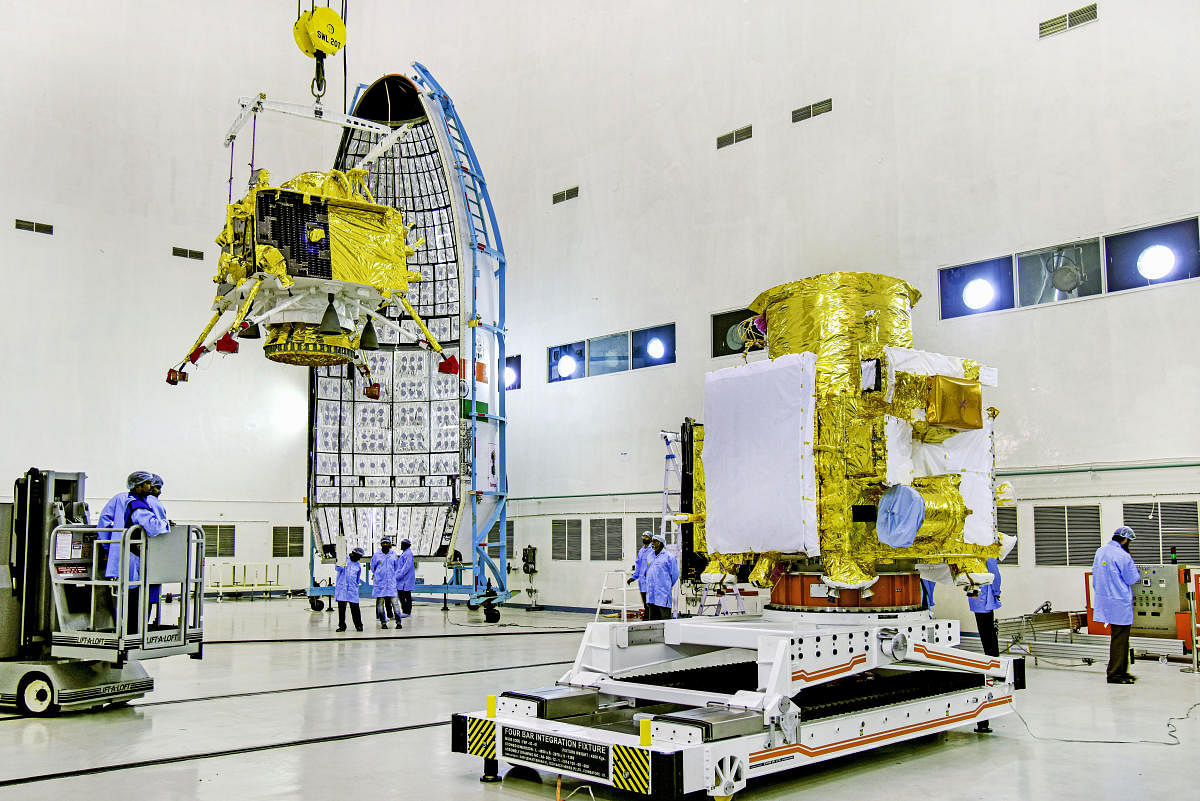
As the nation counts down to the launch of Chandrayaan-2, planetary and astromaterials scientist Chaitanya Giri, who is Fellow, Space and Ocean Studies, at the Mumbai-based think-tank Gateway House, tells DH’s S. Raghotham he’s glad Isro is sending the mission to the moon’s south pole.
What is the significance of Chandrayaan-2 for India’s space programme and capabilities?
This is the second in the Chandrayaan series. If you look at lunar missions, space agencies start with an orbiter mission, then proceed through orbiter-impactor, orbiter-lander, orbiter-lander-rover, then sample return missions, human orbital space flight around the moon, and finally landing humans on the moon. NASA has done all of this. The next thing to do is to stay for slightly longer. NASA is preparing for it, and it will take the lead. But China, Russia, the Europeans, Japan and India are following closely. India has gone on to orbiter-lander-rover in the second mission itself. We are late by seven years, we should have been there in 2012-13, but Russia couldn’t join in as expected. We should not have waited. Now, we are going mostly alone, with just one foreign instrument – from NASA.This allowed Isro to develop the lander and rover itself.
Is it merely to show our ability to send a spacecraft to the moon or has/will it lead to new technology and capabilities development?
Chandrayaan-2 is to an extent a technology demonstrator, but I’m glad Isro is not calling it that. This time, the focus is on science. New technology has been developed for it, but it is confined to Isro. The lander instruments are new, but even the private Team Indus had made a lander, which has now been selected for the Artemis programme. Isro should have been able to use what Team Indus had developed. But even lander has become base capability, nothing special in it anymore. The delay or procrastination after the Russians backed out has cost us.
What is the significance of going to the lunar south pole? What does Isro expect to do on this mission?
We don’t know much about the far side of the moon and the poles, what they are made of. Chandrayaan-1 did some mineralogical analysis, water analysis of hydroxyl ions, but we didn’t quantify the reserves of ice. We also have to figure out what sort of ice it is in the south pole. We don’t know what it is. If humans are to go back and stay, then we need to know what kind of ice it is. Let’s give it to Isro. It chose to go to the south pole, not the lunar tropics. I’m glad about that. It shows that Isro is moving towards the global exploration trends.
In 2020, the Chinese will go to the south pole with Chang’E-6. They are working to bring back ice samples. They need cryogenic refrigeration capability. I believe they are developing it. It’s not easy to do a sample return mission. The sample has to be kept cold and pristine. The integrity of the crew capsule has to be maintained, the insides kept cool, as the capsule goes through the high re-entry temperatures.
In 2021, Artemis-1 will go with three cubesats – lunar flashlight, lunar icecube, lunar polar hydrogen mapper. All of these are built by universities. They will try to quantify the reserves of ice. And in 2022, the Russians will go to the south pole with Luna 25, looking for resources.
What do you see as the most challenging part of Chandrayaan-2?
Reaching the moon itself is a challenge. We are trying out the GSLV. We will all be biting our nails when Chandrayaan-2 is launched. Then there is the issue of sustaining it for about 40 days, and the trans-lunar injection manoeuvre, before it reaches the moon. The Chinese sent Chang’E-2 directly to the moon, Isro is doing it by orbital manoeuvres. It keeps costs low.
Then there is the soft-landing. The lander was built in the last 2-3 years. We should have changed the propulsion on the lander from chemical to ion propulsion. Isro has the capability but has not used it on Chandrayaan-2. They may have chosen to play safe with chemical propulsion but going to the moon is not a safe game!
The lander and rover have to operate for roughly 14 earth days. They have to survive the cold temperature, the dusty environment, the lunar regolith (if it is there in the south pole). Contraction of metals due to the cold temperature is a critical consideration.
What capabilities do we need to develop before we can put an Indian on the moon?
Let’s wait for Gaganyaan, the human low-earth orbit spaceflight mission, before we talk of landing humans on the moon. If we want to send humans into space, then bringing them back safe and sound should be the priority. If we can’t do that, there’s no point trying to do it. Life support systems have to be developed. The DRDO has it, so Isro needs to interact with them before being taken in by the French or the Russians. The French last year offered assistance for human spaceflight; the Russians offered to train our astronauts, and we took up the offer. Instead, we should develop all these capabilities ourselves. There are missing links in Isro’s working that need to be plugged. For instance, Isro should not be the sole custodian of India’s space aspirations. It should not take all the burden on itself. It should share it with the private sector. The private sector can innovate in areas where the government sector cannot. How soon should we put an Indian on the moon? When is the right time to do it? We need to think about these questions.